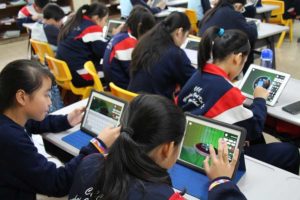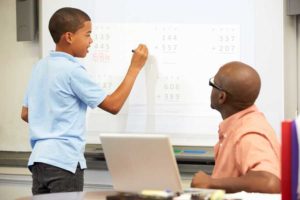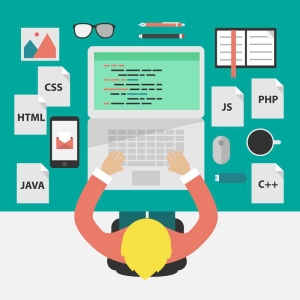District’s digital conversion is an attempt to help prepare students for the world in which they’ll work, school board members say
 Decatur City Schools in Alabama is considering a digital conversion that would significantly change how the district delivers education and communicates with parents.
Decatur City Schools in Alabama is considering a digital conversion that would significantly change how the district delivers education and communicates with parents.The plan would eliminate textbooks, provide each student a personalized approach to learning, give them 24-hour access to the classroom and eliminate the assignment gap by assigning tasks appropriate for each student’s learning level.
DCS would not be the first school district in the nation to take a total digital approach to learning, but school leaders said they want to be a model for the state in the way Mooresville Graded School District in North Carolina became one for the nation.
“We can do this, and if we don’t, we’re cheating our students by not preparing them to be competitive in a global society,” Walter Jackson Elementary Principal Rhonda Reece said.
Reece serves on an 11-member committee that started meeting in August at the request of Superintendent Ed Nichols. The group, which includes administrators, parents and Central Office employees, rolled out its proposal last week.
If successful, DCS, by 2018, will eliminate teachers leading lessons from textbooks for a model that will include student-directed learning, which relies heavily on digital material.
The plan is ambitious, but it is one committee members and parents Mary Ila Ward and Lorrianne Curtis Sparkman said is achievable before 2018.
“This is where our students are, and the good thing about this proposal is it allows them to customize their learning plan,” Ward said.
The first key step, DCS director of technology Kathy Rains said, is school board buy-in, something the committee didn’t overwhelmingly get last week
Board President Karen Duke questioned Rains about how the district would serve parents without internet access, and board member Joe Propst quizzed her about making sure every home has a computer.
The committee put several proposals on the table, including talking with providers about discounted Internet access packages for DCS students and offering free Wi-Fi citywide and opening schools to parents.
“This will be a community focus,” Rains said.
As for providing computers, Chief Financial Officer Melanie Maples said the district will continue to implement its technology plan, which includes providing a computer for every student by 2018.
Rains said the school system will hire an outside company to do a “gap analysis” to determine what infrastructure needs to be in place to execute the digital conversion plan.
She said several school officials also plan to visit the Mooresville Graded School District in January. That district started its digital conversion in 2007, and has become an international model.
In 2013, President Barack Obama introduced his ConnectED program at Mooresville. The president wants to connect 99 percent of schools to high-speed broadband Internet by 2018.
Mooresville used the savings from eliminating more than 30 teachers to fund its digital conversion.
Huntsville City Schools rolled out its digital conversion plan in 2012, and put laptops in the hands of more than 22,000 students. There were some problems, such as the lack of bandwidth to download certain textbooks.
But despite an outcry from some parents to return to standard textbooks, Huntsville school officials stayed with their plan, and the district’s standardized test scores have surpassed those of DCS.
“Do you think Huntsville’s scores rose because of digital conversion?” Dukes asked.
“Yes,” Rains answered.
Nichols said teachers will remain in the classroom to reinforce learning.
Board member Donnie Lane said he is behind the concept “because if we don’t, kids coming to work will not be qualified for jobs. This is where they are learning.”
Rains said Mooresville — a district of about 6,000 students and ranked 96th among 115 North Carolina school districts in terms of spending per student — took about three years to work out its kinks.
According to the system’s website, the new teaching method requires more dialogue and discussion among students, and students are required to participate.
Rains said DCS already is doing some of the things Mooresville does, such as providing students access to computers.
“We’re not ready for this tomorrow, but I think this is the future,” she said.
Sparkman, who is president of the citywide Parent Teacher Association, said there are some benchmarks that will indicate when DCS has gone through digital conversion.
The obvious is there will be no textbooks, but she said the paperwork used to communicate with parents, and to evaluate principals and teachers, will be a thing of the past.
Sparkman said every school will have instructional coaches in place, and students will have digital portfolios.
“We want this to be a state and national model,” she said.
Rains believes in the program, but she wants the district to have community meetings so DCS can get parental buy-in.
“We have to explain to them why our students need this,” she said. “This is just the beginning. We have a lot of work to do.”










